Share your knowledge & learn from experts
Because prepping and community go hand in hand
When to offer aid to the unprepared
Not everyone has prepping as a hobby or a way of life. Not many have gone through a major disaster or trial in their lifetime that would encourage them to be prepared. But those disasters do happen, and if it does, what is your thought process behind offering aid, help, and assistance to others?
It will greatly depend on the situation, where your preps are at the time, and many other contributing factors, but lets have a discussion of some possible scenarios.
Here are some arguments for giving aid: I believe that most people would like to offer assistance to others and help when they can. This can help grow and strengthen your prepping community and many hands makes light work.
Here are some arguments against giving aid: Your house gets to be known as the new hand-out place. Once you give help to one person, they tell others and you have many people on your doorstep. You become a target because you have supplies and resources when others do not.
Another user on here, Matt Black, made a really great forum post about making Mercy Bags for the unprepared. I think this is a great idea and my family is going to make some to help out others.
Read MoreMy main worries to end the week (Prices/CPI and other stuff)
My main worries to end the week are:
The economic models the Fed was using in December for predicting inflation don’t seem like they’re suited for the current economic situation. The Fed needs to seriously investigate why these models are wrong and make sure unwarranted assumptions are not sticking around or leading the Fed to be less aggressive than it has to be. We really don’t need the Fed to be too optimistic about inflation right now. Interest rates impact the price at which investors are willing to buy stocks (the other main consideration being company profitability or expected profitability), which is part of why raising interest rates slows the economy and inflation. If food and fuel costs/shortages get much more serious (or “go parabolic”), the Fed can’t do much about that but might feel pressured to raise rates more aggressively than it has to and cause a recession (or a worse recession) without a good reason. Interest rate hikes will not magically produce more fuel and food. There are counter-arguments to media reports like this (I hope those counter-arguments are wrong). If an income bracket literally can’t afford food or food is simply not available somewhere, niceties (and more) go out the window. Yes, we produce food domestically but fewer imported products = more people buy a lower supply of domestic products. (Mods: remove if this is too political, I’m trying to keep left vs. right ideology out of it and focus on the correlation between job approval ratings and crises). Biden’s job approval rating is historically low for a president, and lower approval ratings typically go along with recessions or crises like inflation in the 1970s or the 2008 Financial Crisis. Yes, Trump’s job approval rating was also pretty low throughout his presidency but (not to get too political or get into left vs. right) many people, right or wrong, found him offensive, thought he was too ignorant to do his job, thought he was an agent of a foreign power, or thought he did not respect the US Constitution or separation of powers. Therefore, it makes sense to assume that many people perceive current federal-level leadership as weak. Yes, you should be worried about what people are willing to vote for if they decide the government or economic/social/political system can’t fix their problems and those problems get too bad. Political extremists on the far left, far right, and elsewhere often spend their time sitting around and waiting for a crisis.Suggested preps:
Food (at least 2 weeks, more if possible, like a few months or a year). Assume that food prices could double within the next year, though my baseline assumption is that we will face acute rather than chronic food shortages if there are availability issues. Get your finances in order (or try your best). Prepare for possible civil unrest. Humans adapted over hundreds of thousands of years to survive. Something in the news might shock you, but remember that you will not always feel the same way. The world could turn into a place that you don’t think is worth living in, but there’s a lot that has to happen before you know that for certain. Read MoreHow to survive an active shooter
A few months ago I shared what I learned about how to survive a nuclear attack after the Russian invasion of Ukraine. I want to be prepared and know what to do when disaster strikes. The horrible Uvalde, Texas elementary school shooting on 5/25/22 is the 30th K-12 school shooting just this year alone and many more shootings will probably occur. So to be prepared, I wanted to learn more about them and what I can do. This isn’t the ultimate guide, but just what I learned after a few hours of research. Please correct or add to what I have.
The motive of an active shooter is to kill and maim as many people as possible to draw attention to their cause. They often target theaters, shopping malls, supermarkets, and schools because they are considered soft targets, which means they have low security and can include mass casualties of unarmed citizens including women and children. When attending these locations, be on extra alert of any suspicious activity.
Shootings can just be a spur of the moment heated argument that is unplanned or can be a coordinated attack that has been months in the making. In a worst case scenario, multiple gunmen might chain off exits to trap their victims and increase the casualty count, may deploy explosive devices for more damage, smoke bombs to create confusion, wear body armor to increase the time they have to hurt others before they are stopped, and may use modified and automatic high power rifles and other weapons to cause as much death as quickly as possible.
As soon as you hear gunfire, get down low and seek cover. Hesitation will get you killed. The three natural responses to immense stress like this are fight, flight, or freeze. Freezing is the worst, fighting is the next best option if fleeing is not. To avoid the tendency to freeze, play out scenarios in your mind and what you may do if something were to happen, know what gun fire sounds like and maybe even go to a gun range and just listen to what a gun sounds like in person when you don’t have hearing protection on. If you see people freezing and you wish to be the hero, use basic commands, hand signals, commanding voice, or even physically grab and move them to snap them out of the mental roadblock they are stuck on. If they put up a fight or resist, move on and don’t risk your life.
This may sound a little silly, but playing shooter video games and paintball can be valuable learning experiences against an active shooter situation. In these games you will learn how to hide behind cover and move from location to location without getting shot. The times I have played paintball really did feel like a war zone where you don’t know where the bullets are flying from, you have to constantly be moving, and it even teaches you a little on how to fight back. The adrenaline and pain you will experience by getting hit by a paintball is not lethal but will be a strong reminder that you might have just lost your life if this was real.
Avoid piling up with multiple people (like is commonly taught in schools). This just creates an appealing and larger target for the gunman to fire into. A single bullet can also pierce through multiple bodies. Spread out and be a smaller and harder target. Do not “play dead”, there are so many bullets flying around that you can easily get hit. Get out of there as soon as possible.
When entering a building, familiarize yourself with the layout. Know where are the entrances, exits, and places of cover and concealment. Cover is something that can stop bullets like a brick wall or vehicle. Concealment still hides you from being visible but will not stop a bullet, like a curtain or bush. Move from cover to cover until you are able to exit the building. If you do have to move from one cover to another cover and will be exposed in the open for a while, wait until there is a lull in the firing while they are reloading. When traveling down a hallway or open area, stay at least a foot away from the walls. If there is any shooting in your general direction and the bullets graze off the walls, you won’t get clipped by a ricochet.
Don’t get caught out in the open or huddled down behind something. The shooters will take out as many people as possible within the first few seconds and then sweep the building looking for those who are hiding. You need to get out and away from the building.
If you are in a supermarket or shopping mall, you may want to avoid running out the way that you came in. The gunmen will know that is where everyone will be fleeing and that is everyone’s natural instinct because that is the only way they know. Every store is required by law to have a back door, even the small shops in the mall have a back door leading to a network of fire escape hallways. The gunmen might not know about these or may not be in those areas because they think that no one would go there.
Be aware of some of the warning signs of individuals who may have active shooter tendencies and report them immediately. Each person who has ever become a killer has family and friends who if they were aware and close to the person, might have been able to intervene and prevent the situation from happening. Be brave and report that classmate, co-worker, or even spouse if you feel they may be a danger to themselves or others.
If you are a parent, talk to your kid’s school board or even teacher and know what their policy is. Recommend items such as a door brace that can be quickly deployed and add additional resistance to people entering your child’s classroom. The Desperate Hour is a recent show I watched where a mom hears of an active shooter situation going on in her child’s school as does everything she can to save him. Not the best movie (filmed during covid and social distancing), but definitely makes you think about what you would do in her situation.
Carry a tourniquet, and IFAK. Have your workplace upgrade their $20 first aid kit to one that can handle an actual emergency.
If you carry a concealed weapon, do not go hunting after the gunman. Get out and use that weapon only if the bad guy is between you and the exit. Be ready to drop the gun instantly when you get out so the police don’t think you are the shooter.
Read More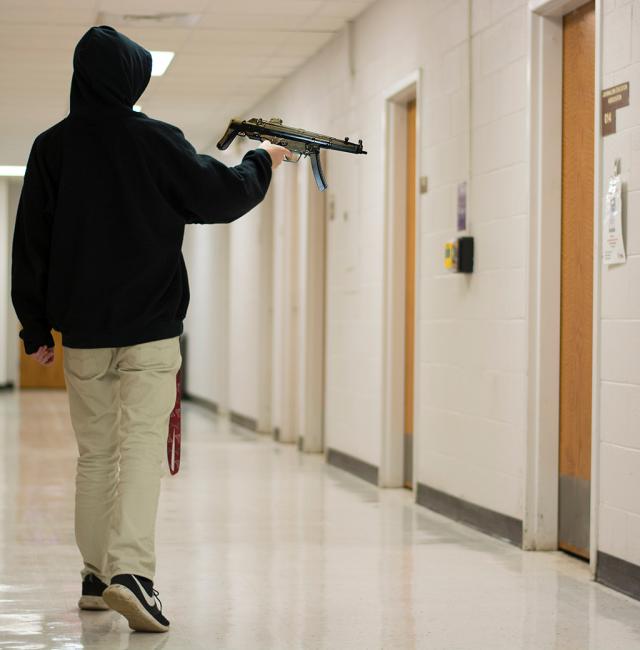
Outdoor target shooting can lead to wildfires
Target shooting outdoors can be a fun hobby, family activity, sport, and prep. It is important to get out and be comfortable with your weapons and test the reliability of your gear. But shooting a small piece of metal thousands of feet per second can not only be dangerous if it hits someone by accident (another forum post for another day), but can also cause a wildfire.
It may seem very unlikely, but it does happen and you don’t want to be shooting, cause a fire, not know how to handle it, and cause millions of dollars in damages and have people lose their homes because you were unprepared.
With the climate changing, wildfire numbers are increasing. 58,985 wildfires occurred in 2021, 90% were human-caused, burning 7.1 million acres. No bueno…
Here are some tips:
Avoid shooting when the fire danger risk is high. When traveling to the area, you may see charts on the side of the road informing people of the fire danger risk that day. If you see that there is a fire ban in place, the risk is high, it is a hot and windy day, or there hasn’t been rain in a while, go somewhere else. Bullet shards are hot and you can’t control where they land.
Don’t shoot into the weeds. Place targets on dirt or gravel and away from vegetation. Just like when you build a fire pit at the camp site and clear stuff around you, do the same for where the bullets will be going.
Shoot paper targets, steel targets or hitting rocks can throw sparks. Exploding or flammable targets are cool, or you may have an old printer you want to shoot, but these all can cause fires.
Stick with lead core bullets, they are less likely to cause fires than steel core or solid copper ammo. Also avoid shooting tracer or incendiary rounds where they could ignite nearby brush.
Always bring a shovel and fire extinguisher with you to quickly put out any fire that may start. Without these tools, you will be just kicking dirt onto a growing fire and that won’t do much.
Call 911 immediately if a fire starts. Sure you will probably get in trouble, get a fine, and may have criminal charges put on you, but it’s a small price to pay to own up to your mistake and quickly get the help out to the scene as soon as possible to stop as much destruction as possible. Again, you will feel pretty bad about yourself if you see families displaced on the news because of your negligence. Many of the locations where you will be shooting will not have reception to call emergency services, so be aware on the way to the shooting range where you lose service and where you will need to drive back to to get it again. When calling 911, report where it started, what type of material is burning, how fast is it moving, how tall the flames are, and what is in the path of the fire.
Park your vehicle in a safe place. Hot exhausts systems parked over some dried material can ignite and start a fire before you even start shooting.
When cleaning up after a fun day of shooting (yes, you need to do this and don’t just leave all your junk out there because the 50 people before you did as well), look closely for any smoke, embers, or signs of fire. Do a final sweep of the location and leave it better than when you got there.
This topic just came to mind and I’ve been thinking about it for a while. I have been guilty of violating many of the above rules in the past, but I want to move forward and improve myself and decrease my likelihood of causing a fire.
Read More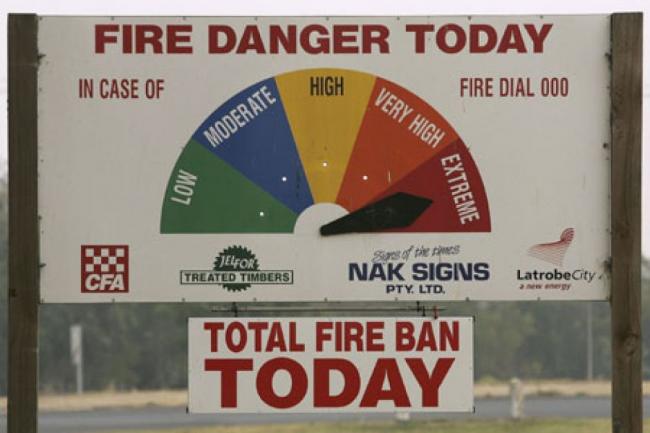
How to make a “well bucket” in case electricity goes down and you’re on well water
I have a 500 foot deep well. The pump is normally powered by solar, and if needed, a generator. But in case those power methods fail or SHTF and we run out of fuel, how would I get water?
I made this manual “well bucket” backup out of scrap pieces of PVC pipe, wood, cordage, a pulley and crank, some nuts and bolts, and a foot valve. It’s all available from a local hardware store or Amazon. I only needed simple hand tools and a power drill. Depending on how you put it together, it might be $25-$100.
It’s essentially like any bucket you’d drop into well for water, but this one is designed for modern, narrow, and deep wells. (This picture shows everything except for the foot valve on the bottom of the bucket/pipe:)
Although you can piece this together with random stuff, here’s a kit of essentially what I used and prices:
Step 1: Build a tripod or similar foundation that can hold a pulley directly over the wellhead. There’s no magic to the design, it just needs to be strong enough to handle 50-100 pounds of hanging force. In my case, the tripod is about 9 feet high and I can fold in the legs to make it easier to store.
But that might be overkill for your needs. If you’re really tight on storage space, you technically could skip the tripod and pulley/crank parts altogether and just have the PVC bucket and line.
Step 2: Attach a simple pulley wheel so it hangs down in the center.
Step 3: You can attach a hand crank to make drawing the bucket up easier. Or you can decide to skip this and just use your hands to pull the rope up. Keep in mind, though, that you might be pulling 20+ pounds up over hundreds of feet. It’s also possible to use an ATV, vehicle, or animal to pull the load up.
If you don’t attach the loose / non-bucket end of your line to a crank, as added safety against the whole thing dropping into your well, you can tie a big knot, attach some random nuts and washers, or some other idea to the end of the line. Whatever works so that if, while raising water by hand you accidentally let go, the whole thing won’t go down and you can’t reach the line anymore.
Step 4: Build the PVC bucket body. You need to know what the diameter of your well pipe is so that you can buy/use a PVC pipe that will fit inside but isn’t too narrow to require lots of round trips. It’s okay to leave a little bit of wiggle room between the PVC bucket and the well wall.
In my case, I used a 4 inch wide pipe that’s 4 feet long. If I did my math right, that pipe/bucket will carry about 2.5 gallons of water.
Step 5: Create the attachment point between the top of the bucket and your pulley line. The simplest way is to drill two holes directly across from each other, 1-2 inches below the top of the pipe, and then just thread your line through.
You can see how I used metal hardware in the picture above to create more of a pivot point that will let the bucket move and spare abrasion on the line. You could do something in between where you run one bolt through the two drilled holes, put a nut on one end to keep the bolt in place, and tie the line to the cross bolt.
Step 6: Making the bottom of the bucket. You have multiple options here, but in any case, you’ll need to put a PVC end cap on the bottom of the main bucket pipe to create the “floor” of the bucket. The end cap will be in the hardware store next to the PVC pipes, as will the glue you might need to secure it to the main body (remember, this bottom cap will hold all of the water weight). Just ask for help.
The simplest version is just a plain ‘ol bucket – the PVC pipe is the body, the bottom end cap is the floor, and there’s no top cap. So you dip the bucket fully underwater until it fills from the top, then pull it up.
There’s a potential problem with filling the bucket from the top, though. Your well might not have enough water in it for the whole bucket to submerge to the point water fills from the top. Or the bucket might be too light to naturally sink below the water line. If that happens, add some weight to the bottom of the bucket to help it sink.
I took an extra step to avoid those problems and have the water fill the bucket from the bottom, using a special (but only ~$20) device called a foot valve. The foot valve lets water come in from the bottom, but not back out as you pull up the bucket.
The white is the bottom PVC end cap. I drilled a hole in the center of that cap to match the foot valve and threaded it together. How you attach the foot valve (such as using washers/gaskets and a threaded nut) will depend on the foot valve, but again, your hardware store can help.
Another option is to buy or build a “check valve.” Some of the links below show this.
Practice: You’ll need to know how to remove the daily-life cap from your wellhead, or whatever else you’ll need to do in case power goes out and you need to swap in this manual method. Don’t wait until you actually need water to try this out!
Additional resources:
https://www.benzinga.com/11/06/1199871/how-to-diy-well-bucket-using-pvc-pipe http://thevalleypiper.blogspot.com/2012/11/how-to-build-well-bucket.html https://www.youtube.com/watch?v=OrMBKePS4Xg https://www.youtube.com/watch?v=Eclhqf7BNlE https://www.youtube.com/watch?v=SERwTNJki10 Read More
My second hand experience with the Ontario / Quebec Derecho storm on May 21, 2022
Hello everybody, I wanted to share my (second hand) experience with what happened on Saturday afternoon in my part of the world.
For context here is a news article about it, as well as a video from Ottawa
https://www.cbc.ca/news/canada/toronto/ontario-quebec-thunderstorms-power-1.6462627
It’s a little bit passed Hurricane week for our friends in the States, but this sort of event is new for me. There are sometimes tornado.s about an hour north of Toronto, but that’s like 6.5 hours from Montreal, an island, which ends up having much different weather patterns.
I was home in Montreal, my partner was at a LARP game in a campground in eastern Ontario (1.5 hours away). They play in an unused area of the campground which is forested. The parking lot is on a road cut through the forest for power lines to pass through.
This is her story.
They got a Weather Alert on their phones that a storm was coming, and to seek shelter. So they did, mostly in their tents, or somewhat sturdier car canopies. It was less than a minute before trees started falling and they ran out to the road (a highway) and hid on a side of a truck to block some of the wind. The rain started after the dust. The person across the street allowed them into their garage to take shelter.
No one got really hurt, there were a few cuts and bruises, but no concussions. But people had dirt all over their faces and clothes and in their mouth. My partner said, it didn’t really rain, it felt like dust and dirt was going through the air before the hail came. She’s glad she wears glasses and many people complained of having stuff in their eyes after.
The aftermath was that trees had been totally uprooted, branches flew around. Tents were destroyed, cars totalled, branches were sticking out of the ground from having been propelled so hard into it. Trees fell on the road and took down the powerlines, which created a fire where they touched the ground. My partner couldn’t leave as the road was blocked, and couldn’t get to the car because of the live wires near by. She only made it back on Sunday night (more than 24 hours after the event) once the road was cleared by the work crews, and the electrical wired were moved.
I also got a weather warning on my phone later in the evening, but in the end I saw and heard nothing, even if I could be considered to be in a windy street.
81 panicked LARPers 12 tents damaged (flipped / crushed) 4 people hit by trees 3 electrical fires 2 sprained ankles 1 totalled car (other cars got minor damage)
They were lucky to have been a big group. They had plenty of water, and kept a fire going. They have generators, and someone had a fire extinguisher and chainsaw is his truck, which helped to put out the fires and clear some paths. In the end my partner was lucky. Our car is unscathed, our tent is unscathed, and she remained in good spirits throughout.
Here’s some pictures.
You can see the wires touching the ground here and it’s the cross pole that’s on the ground.
What I learned. * Put a fire Extinguisher in the car * Put a saw of some sort in the car * Have something to wash yourself with in the car.
I’m adding Derecho to my risk assessment. It’s the first one I or someone close to me has lived through but with climate change, maybe there will be more.
Read More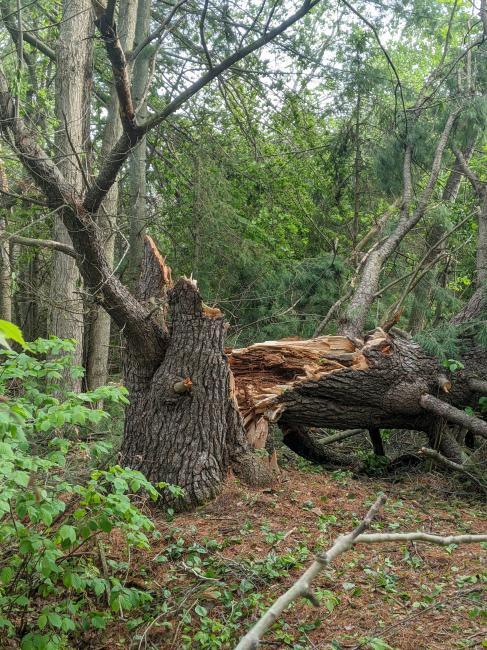
Recognizing when it’s time to change how you prep
Yesterday, my prepping evolved. I made a hard choice and packed up all my canning gear for donation.
Over fifteen years ago, I purchased all of it when I ramped up my preps. It was a natural choice to return to the lifestyle I knew so well. Canning was part of self-sufficiency.
The problem was I never used any of it. The canning gear sat in unopened boxes for the someday promise of a garden.
The canning supplies also sat in boxes because there was no room on my prep shelves for any of those lovely unfilled jars. That was because I had already stocked my shelves with store bought cans, regularly rotated and neatly stamped with expiry dates.
There was no way to carve out more room in my prep storage. The space just wasn’t there and yesterday, I finally accepted that fact.
I also accepted that jarred foods as preps don’t make sense for me anymore. My husband and I avoid high sugar foods and rarely eat jam.
Arthritic hands mean an unpredictable grip. If I drop a jar, it breaks. If I drop a can, it dents.
If we ever had to bug out or set up an alternate location for bug out, it will be easier to load tin cans than glass jars.
I was also concerned about the sustain ability of long term canning without replenishment of canning supplies, like lids or even fuel to properly sterilize jars and keep the process clean under what might be adverse conditions.
The risk of a bad batch of canning had always bothered me in the back of my mind. My Mom was an expert canner, and yet, I remember a time when she culled a batch of canned beans because she didn’t like the look of them that winter.
A friend made us lunch one day and proudly brought out her jar of jam. There was mould under the paraffin seal. I expressed regret that her jam was spoiled. She didn’t believe that it was “spoiled” and scooped the upper layer of jam out of the jar. I refused to eat any of it. Mould on the surface is also below the surface and should never be consumed.
No matter how careful a person is, home canning does carry the risk of botulism. A pressure canner is safest for low acidic foods, but it always goes back to operator error as a possible source of food borne illness.
Food borne illness is not something anyone wants to encounter in the best of times and definitely not during a crisis where medical care may be unavailable. Spoiled and inedible food is not a prep.
The last factor in my choice to relinquish my canning gear and preserve food using different methods was because of what happened last summer.
My someday promise of a garden finally arrived. I promptly blanched and froze everything that I grew. The thought of canning in that heat never crossed my mind. Not once.
I realized that it was time to evolve again.
The word evolution comes from the Latin “evolvere” meaning “unrolling.” One of it’s meanings is “gradual development” and that is exactly what prepping has been for me.
Prepping is not a static, “do it this way forever” practice. It is a part of a life that undergoes growth, change, and gradual development.
If anything prepping has taught me to face reality and find solutions.
So, it is out with the canning and hello freeze drying. I have my home sized freeze dryer picked out. Until the budget allows it, I will be deep freezing my produce instead. What I grow this year will also be harvest as part of daily meals and if there is surplus, it will go for donation to the food bank.
I believe the freeze dryer will be a good prepping investment. Freeze dried foods have a longer shelf life than dehydrated foods. I can seal the freeze dried food into mylar bags and put them into pails for storage. The pails work well on my storage shelves and I don’t have to worry about breakage.
These are the moments in prepping when we can practice courage by letting go of an idea of how to prep that no longer works for us.
I was holding onto the tradition of canning and the memories it held for me. Now, I am forging new methods that hold the promise of new lessons and more to learn.
I think sometimes in prepping, there is a tendency for people to embrace ideas or methods of survival, because that is what everyone else is doing. However, that doesn’t always make it right for you. No matter how you prep, do what works for you. Don’t be afraid to evolve.
Read MoreCook your food in water instead of over a fire during a survival situation for the most nutrition
When you need to cook something you have caught, hunted, or foraged, cooking it as a soup in a pot of boiling water is much more nutritionally efficient versus grilling it over an open flame.
By containing the food in the pot, all of the nutrients are infused into the surrounding water which can later be drank as broth. That’s why chicken noodle soup was a common “cure” to being sick, because back in the day the whole chicken was cooked into the soup and the bones, joints, and skin would be broken down into a very nutritionally dense broth. The can of Campbells chicken noodle soup from the store in 2022 does not provide the same benefit.
It’s also easier to make sure that the food is cooked thoroughly if it has been boiling in a pot of water for some time. You can’t burn and char it in water but that can happen over an open flame.
A grilled piece of meat will always taste so much better, but in a survival situation you want the most nutrition as possible in soup form.
Read More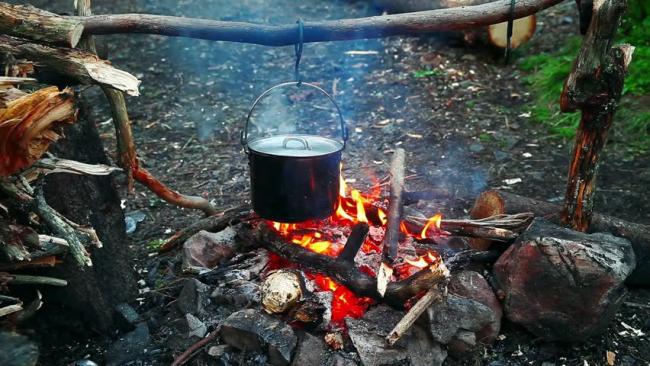
The dangers of leaving people and pets in hot cars
The above graph is from San Jose State University and shows the amount of children who die each year from being in a hot car. See the dip in 2020-2021 during the pandemic and when people were not driving as much?
Newborns, children, those with disabilities, the elderly, those with a chronic illness, or pregnant women are especially vulnerable and sensitive to extreme heat. To be safe, don’t leave anyone in a hot car.
Animals can die of heatstroke within 15 minutes in a hot car. Cracking the window does not help. Plan your trips and know where you are going during the day. If you are going somewhere that involves leaving your pet or child in the car at any time, leave them at home with a care giver.
If you ever see a pet or child left unattended in a vehicle, call 911 immediately and do not leave their side until the issue has been resolved. Signal for someone else to note the license plate number and go into nearby stores to try and locate the owner of the vehicle. Talk to dispatch and monitor the trapped victim’s status. If they get worse or even faint, then break in and save them. What are your thoughts on smashing out a window to save a pet in a car?
Some additional facts:
The temperature inside a car can get 50 degrees hotter than on the outside. After 10 minutes, and car will reach 94 degrees inside when the outside temp is 75. Heatstroke can occur when outside temps are as low as 57 degrees. A child’s body heats up 3-5 times faster than an adult, so you may be fine inside the hot car but your child may be in the back seat really struggling. Keep an eye on them even if you are there with them. Lock you vehicle at home not only to prevent theft, but to keep children from playing in them and accidentally being locked in. Only 21 states have laws addressing leaving a child in an unattended vehicle. But even if you are in a state that doesn’t have a specific law, you can still be charged with child endangerment or even manslaughter.What are your thoughts about leaving a kid or pet in a car with the AC on full blast while you run into the post office?
Leaving children or pets in a hot car might not even be intentional and could just be a result of being distracted and on “auto-pilot mode”. Avoid being rushed or on your phone that can leave you more frazzled and absent minded,. Build up the habit of “Look Before You Lock“. Even if you don’t have children, get in the habit for when you may help transport a neighbor’s kid, niece/nephew, or grandchild. An additional benefit of this habit is that while doing the sweep of the vehicle, you can be aware of any objects left in plain view that might be attractive to thieves.
Don’t assume that every family member or care giver you place in trust of your loved ones knows as much as you do about hot vehicles Educate them. Here is a 10 minute free online interactive course about leaving children in hot cars.
Read More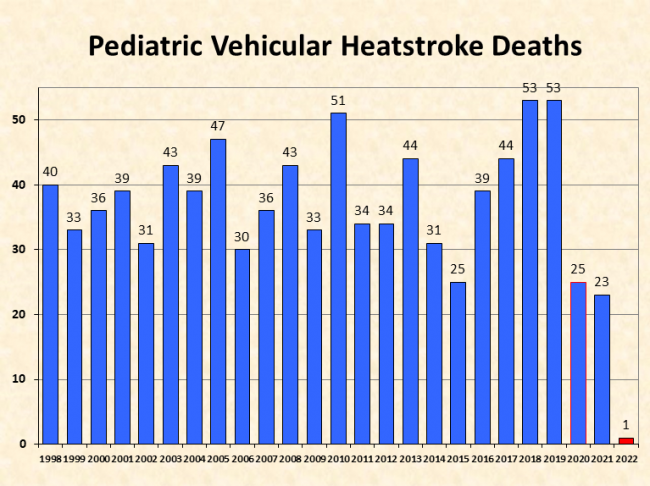
The Gottman Island Survival Game
While reading a marriage book, I came across an exercise about communication and being able to influence your spouse. Thought it would be interesting for people here to think about and maybe do with each other here or privately with their own spouse.
The Gottman Island Survival Game
Imagine yourself shipwrecked with your partner/the members of this forum on a tropical desert island. Gilligan and Ginger are nowhere in sight – the two of you/the members of this forum are the only survivors. You have no idea where you are. A storm appears to be on the way. You decide that you need to prepare to survive on this island for some time, and to find some way to ensure you can be spotted by a rescue party. There are a lot of items from the ship on the beach that could help you, but you can only carry ten items.
Step 1: Each of you writes down on a separate piece of paper what you consider to be the ten most important items to keep from the inventory list below. Then rank-order these items based on their importance to you. Give the most crucial item a 1, the next most important item a 2, and so on.
Ship’s Inventory:
Two changes of clothing AM-FM and short-wave radio receiver Ten gallons of water Pots and pans Matches Shovel Backpack Toilet paper Two tents Two sleeping bags Knife Small life raft, with sail Sunblock lotion Cookstove and lantern Long rope Two walkie-talkie sender-receiver units Freeze-dried food for seven days One change of clothing Bottle of whiskey Flares Compass Regional aerial maps Gun with six bullets Fifty packages of condoms First-aid kit with penicillin Oxygen tanksStep 2: Share your list with your partner/people here on the forum. Together come up with a consensus list of ten items. This means talking it over and working as a team to solve the problem. Both of you need to be influential in discussing your viewpoint and in making the final decisions.
Let’s all do this exercise. Pick your 10 items, list them down in the comments, and then discuss/convince/argue on why we should pick the various items. Let’s see if we can get down and agree with at least 7/10 items as a community if we all were together in this situation of being stuck on an island together.
(Ignore Step 3 if doing it here on the forum, but I’m leaving it in case you want to work with your spouse on your communication)
Step 3: Once you have compromised on a third list, it’s time to evaluate how the game went. Think about how effective you were at influencing your partner and how effective they were at influencing you. Did either of you try to dominate? Were you competitive? Ask yourself if you had fun. Did both of you work well as a team and feel included, or did you sulk, withdraw, express irritability/anger?
Read More
Hurricane Preparedness Week May 1-7, 2022
Hurricanes are powerful and very destructive forces of nature that affect millions of people each year. Luckily they are not spur of the moment disasters like a car accident or earthquake and some warning and preparation can be made beforehand to either ride out and withstand the devastation or get to a safer location in time.
NOAA (National Oceanic and Atmospheric Administration) will be releasing a daily tip on social media platforms this next week with advice on how to be better prepared for the upcoming hurricane season. The Prepared will be sharing those tips on our Facebook and Twitter pages as well, along with some additional guidance.
For additional preparation, check out: How to prepare for and survive hurricanes
Feel free to also share your hurricane preparedness tips, stories, and experiences down below.
Read More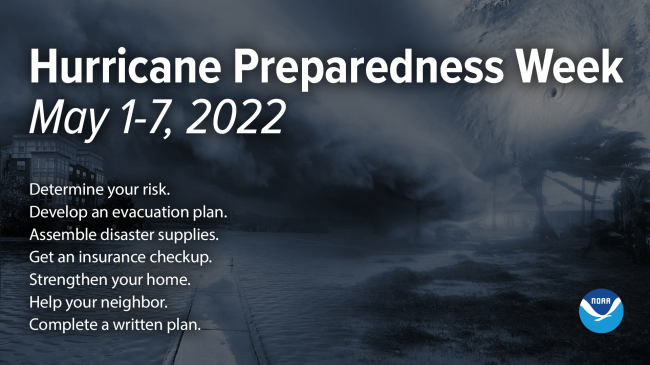
Water purification priorities
There’s a few methods to purify water but I was wondering how they should be prioritized if you have all of them. Say you’ve been a good prepper and have the following…
– Water filtration (HydroBlu inline + backup LifeStraw)
– Water purification tablets (chlorine)
– A clear bottle for solar disinfection (SODIS)
– A hard canteen you can boil in, plus lighter/matches
– Bandana
The day is young, the sun is out, and you’re staring at a puddle. After you’ve scooped up as much as you can, what item or combo of items do you reach for first? And second, third, etc. Of course, you have no idea how long this emergency will last.
I’m writing a short guide for myself / my partner on how to prioritize gear use for safety and longevity. For instance, boiling requires fuel, so it wouldn’t be my first pick.
Read MorePreps for people with physical disabilities and limitations or who aren’t in great physical shape
I’d like to start a thread where we can discuss how to best get prepared if you or a loved one is dealing with physical disabilities or limitations or isn’t in the best physical shape. I’m particularly interested in discussing scenarios where we have to bug out. I know it’s desirable that person be in good shape for physically strenuous activity in case of the need to evacuate, but let’s get real. Some people just aren’t. Life happens; age happens; disability happens. We all do our best. I see physical fitness as an important goal to have in mind for health and safety reasons, but not something we should feel bad about falling short of.
I have very personal reasons for starting this thread. I am in my 50s, not in great fitness shape, although not horrible. I have some repetitive usage disabilities and long standing foot problems and now some knee problems. Nothing extreme, but I’m pretty keenly aware that hiking out of Dodge with 25 or 30 lbs on my back would wear me out pretty darned fast. Honestly, I don’t know if I’d even make it a mile on foot. I also have a mother who is much MORE disabled, living part time alone after having a stroke two years ago.
I want to be practical so am looking for ideas of what I can do at my current size and shape and fitness level to prepare.
Read MoreWhat shortages/price hikes are you all anticipating?
I feel like I’ve seen a lot of news about higher fuel prices and an expectation that wheat will be in short supply and higher in price, but I was reading this article and found that Russia is one of the leading exporters of fertilizer. Fertilizer shortages could ultimately really impact agricultural yields globally. What shortages/price hikes are you all anticipating and prepping for?
Read MoreWhat would a non-nuclear world war look like?
Hi all,
I’ve seen a lot of us talking about nuclear war and MAD (which has been on my mind as well), but I’m also curious what you think would happen if we had a non-nuclear world war. WWII could serve as some template, but we now have stronger international communities and weaker local communities.
It looks like higher food and gas prices are already happening. People are pulling together more, but hate crimes are also spiking. Globally, alliances are strengthening and being made for the first time. Several countries are also talking about localizing their supply chains more.
Do you have any predictions for what it could look like both in terms of everyday life and in terms of global relations?
(Edit: does anyone know if you capitalize “in” in a title? It looked wrong both ways…)
Read MoreCreating a prepping team
No man is an island and no one can succeed in a disaster alone. Mad Max, The Omega Man, I Am Legend, even The Road had guys going it alone against the post-apocalyptic hordes. But that’s not realistic. A truly prepared individual will surround themselves with like-minded others who have diverse skill sets.
The question I have is how? How do we find these people? I’ve been looking. I’ve joined groups, I’ve been on other forums. I want to enlist the people in my community, but do so without coming on like a desperate weirdo or paranoid gun nut.
Where do y’all go to find others?
Read MoreNuclear power plant failure…options?
So I was perusing the beginner prepper guide and was thinking about things I should start with to better prepare me and my family for emergency situations. I live in Kentucky and happened to see the map for nuclear power plants and wondered about the fallout should the ‘world go dark’ scenario – government collapse etc. So what I was wondering was…how far could you live in a place near a nuclear powerplant and not have to worry about things like fallout or radiation poisoning in the water and air? At least not enough to have to move… I’ve included an image that shows the current location of nuclear power plants and the link (Global Map of Wind, Weather, and Ocean Conditions) to a website that shows the real-time wind/weather patterns (quite beautiful actually). I obviously don’t know much about nuclear power or what their procedure is should they need to power down but I imagine it wouldn’t be pretty if they had to be shut-off permanently? I do know that in the event of a power failure they recommend everything outside of a 100mile radius to evacuate. Any references would be greatly appreciated as I really enjoy a good research rabbit hole but a starting point does help. I guess I’m just not sure how much energy and resources should be spent in a place that would prove unlivable when nuclear power fails and starts affecting the environment.
Read More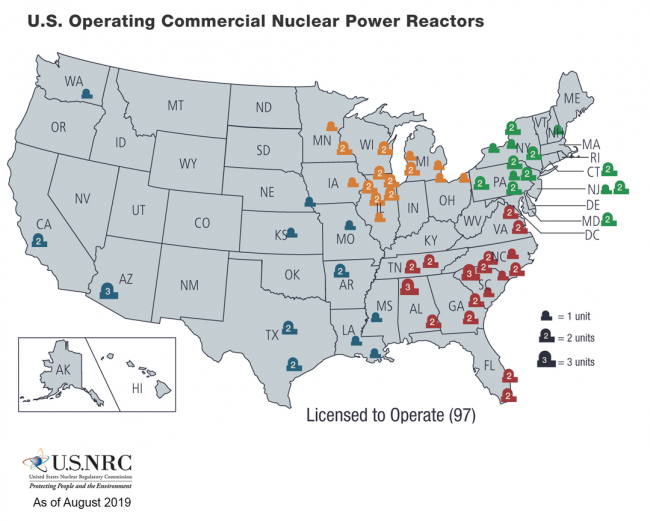
How would those who live in a city survive without trucks?
While taking a business trip to Southern California I looked out the window and saw nothing but buildings, roads, and urban yuck as far as the eye could see.
At any time, I was probably looking at a million or two people. The thought that crossed my mind is how are all these people supported? I didn’t see any farmland, no large bodies of water, and where was the power plants? It seems like the food, water, and even power was transported in. What if all that stopped? By looking at the pictures you can see a few small bodies of water or a few football fields or parks that could be turned into farmland. I still don’t see how the vast number of people I was looking at could have enough resources and survive though. It would require a mass exodus out of the city or a large portion of the population to die off.
If you live in a city, it is even more important to store water, food, and fuel. And have a way to protect those resources because the hundreds of people around you who are not prepared will get pretty desperate.
Read More
Inflation preparedness
Alternatives to the US dollar (eg gold, bitcoin) are frequently discussed as insurance against inflation. But are there other steps one should be taking to prepare? Should a renter try to become a homeowner? What storable goods are likely to become expensive? What storable (yet necessary) goods are likely to become scarce?
Read MoreDo I need more than a whole house generator?
I have a natural gas line into my home and a 22kw whole house generator that automatically kicks on when the electricity goes out. It can easily power everything in my home, including my gas furnace (necessity) and my whole house a/c (a nice luxury during a summer outage). The primary worries in my area are winter storms and high-wind storms (including tornados, although I don’t live in “tornado alley.”) My question: “redundancy” seems to be a key concept in prepping, and I’m beginning to wonder if over-reliance on my generator for heat and electricity is wise. Thoughts?
Read MoreYou can never stock too much _________
What are some things you can never have too much of?
Read MoreUsing a bushcraft auger to build things during a bug out or electricity-free disaster
Just came across a thing called a bushcraft auger. It’s like a giant drill bit that can be turned by using a stick.
Originally I thought that must be pretty hard to drill through something by hand, but then remembering my physics class, you can make it as easy as you want by inserting a longer stick longer and getting more leverage.
“Give me a lever long enough and a fulcrum on which to place it, and I shall move the world.” – Archimedes.
From a preparedness perspective, it would be good to have a way to drill holes without the need for complex machines that run off of electricity.
On Amazon you can buy a variety of sizes –
You could even make your own by welding a normal drill bit onto a piece of pipe. It seems to be what this person did-
The most common projects I’ve seen the bushcrafter crowd make are stools, ladders, and swedish rocket stove fires.
Sorry I got a bit carried away there with multiple pictures, hopefully there isn’t a forum limit and they all come through. Has anyone heard of or used one of these before? What are your thoughts on it being a practical prep vs. just being a cool tool for bushcraft projects?
Read More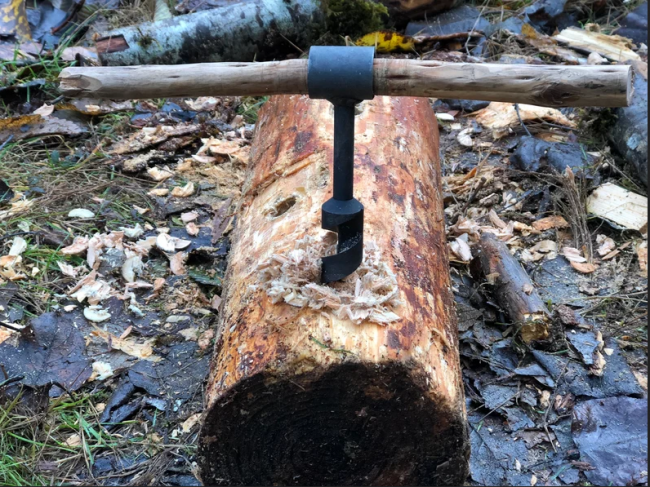
How to escape 2nd floor bedroom in case of fire
Do y’all have an recommendations for gear or protocol for escaping a second story bedroom in case of a fire between the bedroom and the stairwell that leaves the house?
I searched the forums and didn’t find anything.
I’m thinking a window breaker and some sort of collapsible ladder.
Read MoreOne woman’s 18-point survival checklist for fleeing Ukraine as Russia invades : NPR
Found this on NPR two days ago. Thought it was fascinating and wanted to share with y’all since there are several threads about Ukraine on the forum.
One woman’s survival checklist fleeing Ukraine
Read MoreFiction book review: Blue Fire by John Gilstrap
Blue Fire by John Gilstrap. Published March 2022 from Kensington Books.
TL;DR: A well-written, apolitical post-apoc page turner that emphasizes group dynamics more than gear or gun play. I would recommend borrowing from the library over buying. The first book in the series is available on Kindle Unlimited.
Blue Fire, the second book in John Gilstrap’s Victoria Emerson series, begins with a gun fight. Yet unlike most post-apocalyptic thrillers, the fight is not the result of a prison escape or government totalitarianism but rather a failed negotiation. And the aftermath of the brief fight features less blood and guts and more politics. As such, it sets the tone for much of what is to follow.
The Victoria Emerson series begins in Crimson Phoenix. In the opening of that book, Victoria Emerson, a Congresswoman from West Virginia, and two of her sons are awoken by a pair of soldiers tasked with escorting them from Washington, DC to a secret government bunker in preparation for an American-supported strike by Israel on Iran. When she discovers that the bunker will not accommodate her children, she refuses to enter and leaves with her reluctant military escort. The Middle East tensions trigger a wider global conflagration, including nuclear attacks on the United States, which Victoria and company weather in western Virginia. Various adventures ensue.
Blue Fire begins where Crimson Phoenix leaves off, with Victoria and her party helping lead the small town of Ortho as it weathers the challenges of life without power, external resources, or the rule of law. Secondary story lines follow her oldest son, who was away at boarding school at the time of the attack, and the members of Congress in a government bunker, including the former Speaker of the House, now reluctantly turned President.
The books deviate pleasantly from much of prepper fiction, which tends to focus on the survival of individuals and small groups. Typical stories stress individualism and are rife with male, ex-military leads with either heroic powers or startlingly good luck. Blue Fire and its prequel cast all of that aside. At its heart are two contrasting efforts to create order: one by Victoria and her allies in Ortho and another by a National Guard leader who has devolved into a de facto warlord. The characters in the book who are in the most danger are actually those who are most isolated – Victoria’s eldest son Adam and his girlfriend.
All the characters in Blue Fire read like fairly normal people. Even the military members are quite ordinary. The lead officer, Major McCrea, is most needed for his planning and organizational skills. Sergeant Copley is valued as much for his carpentry hobby as his military training. Neither are superhuman fighters. Victoria herself is both skilled and flawed: she is smart, forceful, and driven to get things done, but even her own sons are unsure if she remains in Ortho because she really wants to help or because she cannot give up her love of being in authority.
The books also get points for being very intentionally apolitical. No political parties are ever referenced by name; there is only the majority and the opposition. While the Senators and Representatives described in the book are given home districts, they are always districts that could plausibly be blue or red. No clearly Democratic or Republican political position is ever ascribed to a character. The effect is a sharp departure from the partisan politics often found in prepper fiction. Instead, there is a clear message that the real cause of ineffective government is a thoughtless focus on holding power, posturing, and scoring cheap points. I am sure that many readers will agree.
Lastly, I appreciated the books’ focus on people and skills more than gear. Far too many prepper novels focus incessantly on the names of specific guns, knives, backpacks, and boots. The worst sound like the author is regurgitating parts of a gear catalogue. There is almost none of that here. Gilstrap clearly knows enough about firearms and outdoorsmanship to describe shooting, hiking, and camping accurately. But he also knows that it does not matter much where you bought your equipment, as long as you know how to use it.
In short, Blue Fire (and Crimson Phoenix) will be appealing to a wide audience, including many people who find typical prepper fiction off-putting. But what does the book teach about prepping? My objection to books like A. American’s Going Home is not just that the incessant gear descriptions make for tedious reading. It is that the book sends the message that slogging hundreds of miles with a 50+ pound backpack loaded down with three different cooking systems is the best way to ride out the apocalypse. Other books contain may similarly miseducate the reader, by implying that you cannot survive danger without a rural farm, prior service as an Army Ranger, or a stockpile of silver coins.
On the one hand, Blue Fire’s description of the disaster that befalls America is both vague and a bit unrealistic. Nuclear war is a possibility, and maybe one that feels more salient given the current tensions with Russia. However, Gilstrap, as he explains in an author’s note at the end of Crimson Phoenix, has put aside much of the science about the effects of a nuclear exchange in order to facilitate his storytelling. In particular, the characters do surprisingly little to deal with or avoid nuclear fallout. The story is also told from the points of view of characters with limited information, sparing the author the task of detailing exactly what happened. In short, this book (and its prequel) will not provide edutainment on nuclear disasters.
Where the book really shines is in its emphasis on community and human relations. While other books may prompt the reader to ask, ‘Where will I go in a disaster?’ this one prompts the reader to ask, ‘Who will I know when I get there?’ Or while a typical story may lead you to think, ‘Do I have supplies for my family?’ this one may prompt you to reflect on what you will do with families that do not have supplies. Ultimately, survival is not just a solo activity but a community one. The book gives few readymade answers on how communities can prepare, but it nudges the reader’s thinking in a useful direction.
Read More